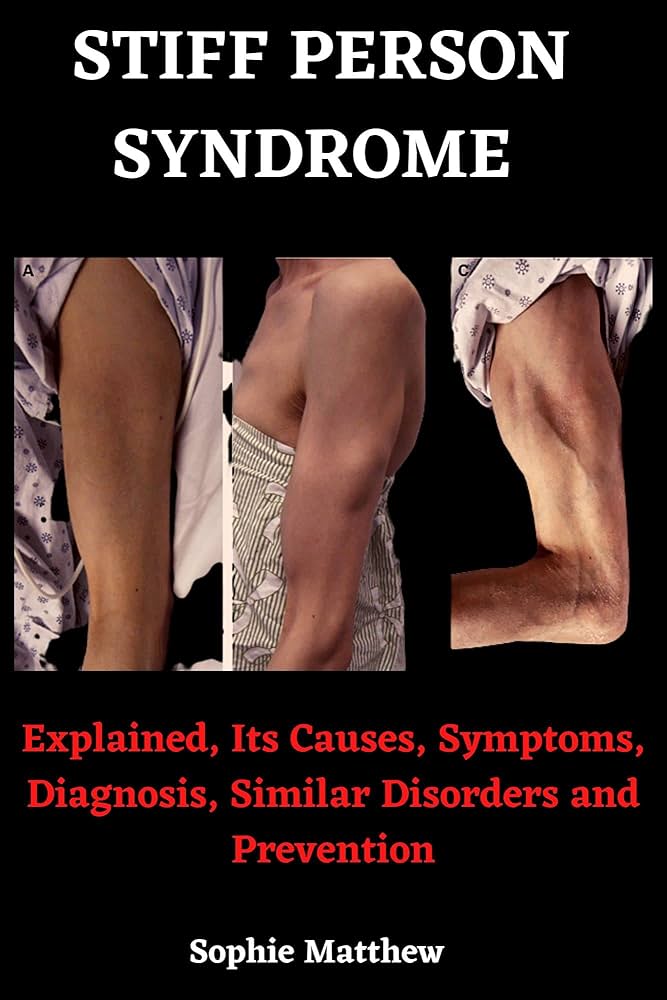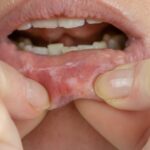Stiff-Man Syndrome (SMS), also known as Stiff Person Syndrome (SPS), is a rare, progressive neurological disorder characterized by muscle stiffness, spasms, and functional disability. Most cases are autoimmune in nature and associated with antibodies against glutamic acid decarboxylase (GAD), an enzyme vital for gamma-aminobutyric acid (GABA) synthesis. The deficiency in GABA leads to increased muscle tone and heightened sensitivity to sensory stimuli.

Etiology and Pathophysiology of Stiff-Man Syndrome
Autoimmune Mechanisms
In the majority of patients, SMS is linked to an autoimmune response against:
- GAD65 antibodies (present in ~60–80% of cases)
- Amphiphysin antibodies (often associated with paraneoplastic SMS)
- Glycine receptor antibodies (invariant forms of the disease)
These antibodies inhibit GABAergic transmission in the central nervous system, particularly in the brainstem and spinal cord, resulting in impaired motor inhibition and sustained muscle contractions.
Clinical Manifestations of Stiff-Man Syndrome
Primary Symptoms
The disorder typically presents with:
- Progressive axial muscle stiffness, especially in the lower back and abdominal regions
- Painful muscle spasms, often triggered by emotional stress or sudden stimuli (loud noise, touch)
- Postural deformities, including hyperlordosis
- Gait abnormalities due to rigidity and impaired balance
- Startle response, leading to falls without warning
Variants and Associated Conditions
Several clinical variants are recognized:
- Classic SMS: Truncal and proximal limb rigidity
- Partial Stiff-Person Syndrome: Localized stiffness (e.g., stiff limb syndrome)
- Paraneoplastic SMS: Often associated with breast cancer, lung cancer, or Hodgkin lymphoma
- Progressive encephalomyelitis with rigidity and myoclonus (PERM): Severe, rapidly progressive form
Comorbid autoimmune diseases:
- Type 1 Diabetes Mellitus
- Thyroiditis
- Vitiligo
- Pernicious anemia
Diagnostic Approach to Stiff-Man Syndrome
Clinical Evaluation
Diagnosis requires careful clinical examination, often guided by:
- Patient history of stiffness and spasms
- Neurological assessment indicating continuous motor activity
Laboratory and Imaging Investigations
| Test | Purpose | Findings |
|---|---|---|
| Anti-GAD65 antibodies | Autoimmune marker | Positive in majority |
| Electromyography (EMG) | Detects involuntary firing | Continuous motor unit activity |
| MRI of brain/spinal cord | Rule out structural causes | Usually normal |
| Lumbar puncture | Rule out infection or malignancy | May show mild protein elevation |
| Paraneoplastic panels | For suspected cancer association | Amphiphysin antibodies |
Differential Diagnosis
Conditions that may mimic or overlap with SMS include:
- Parkinson’s disease
- Multiple sclerosis
- Dystonia
- Psychogenic movement disorders
- Tetanus
- Ankylosing spondylitis
A thorough evaluation is necessary to distinguish SMS from these disorders, particularly in early stages.
Treatment and Management of Stiff-Man Syndrome
Symptomatic Therapies
The initial focus is on muscle relaxation and spasm control:
- Benzodiazepines (Diazepam, Clonazepam): First-line treatment for spasm control
- Baclofen: GABA-B agonist reducing muscle hyperactivity
- Gabapentin or Pregabalin: Adjuncts for pain and spasm relief
Immunomodulatory Treatments
For immune-mediated disease progression:
- Intravenous Immunoglobulin (IVIG): Reduces autoantibody levels; effective in many cases
- Plasmapheresis: Especially in patients with paraneoplastic or refractory SMS
- Corticosteroids: Useful during acute exacerbations
- Rituximab or Cyclophosphamide: For severe, antibody-positive or malignancy-linked cases
Physical Rehabilitation
Rehabilitation is crucial to maintaining mobility and independence:
- Stretching and strength training
- Gait stabilization exercises
- Psychological support for anxiety or depression resulting from functional limitations
Prognosis and Long-Term Outlook
While not typically fatal, SMS leads to progressive disability if untreated. Early diagnosis and immunotherapy can significantly improve quality of life. Prognosis varies by subtype:
- Classic SMS: Moderately disabling but manageable with treatment
- Paraneoplastic SMS: Poorer prognosis due to cancer
- PERM: Aggressive and often refractory
Long-term treatment is often necessary, with periodic relapses.
Prevention and Risk Mitigation
As an autoimmune disorder, SMS has no known method of primary prevention. However:
- Early recognition of symptoms
- Genetic counseling in familial autoimmune clusters
- Screening for comorbid autoimmune or neoplastic diseases may aid early detection
Avoiding known triggers such as stress and abrupt sensory stimuli may help reduce symptom frequency.
Frequently Asked Questions:
What causes stiff-man syndrome?
It is mainly caused by autoimmune disruption of GABAergic neurons due to antibodies like anti-GAD65, leading to muscle rigidity and spasms.
Is stiff-man syndrome curable?
There is no definitive cure, but symptoms can be effectively managed with medication and immunotherapy.
Who is most at risk?
Middle-aged adults, particularly females, and individuals with other autoimmune diseases are at higher risk.
How rare is stiff-man syndrome?
It affects approximately 1–2 in a million people, making it one of the rarest neurological disorders.
Can stiff-man syndrome lead to paralysis?
Although not typically paralyzing, severe stiffness and spasms can significantly impair mobility and function.
Stiff-Man Syndrome represents a complex and rare autoimmune neurological disorder that demands an interdisciplinary approach to management. Prompt diagnosis, tailored immunotherapy, and long-term rehabilitative care are essential to mitigating the functional impact of this debilitating condition. Continuous research into antibody profiles and immunosuppressive strategies holds promise for more effective treatment paradigms in the future.

